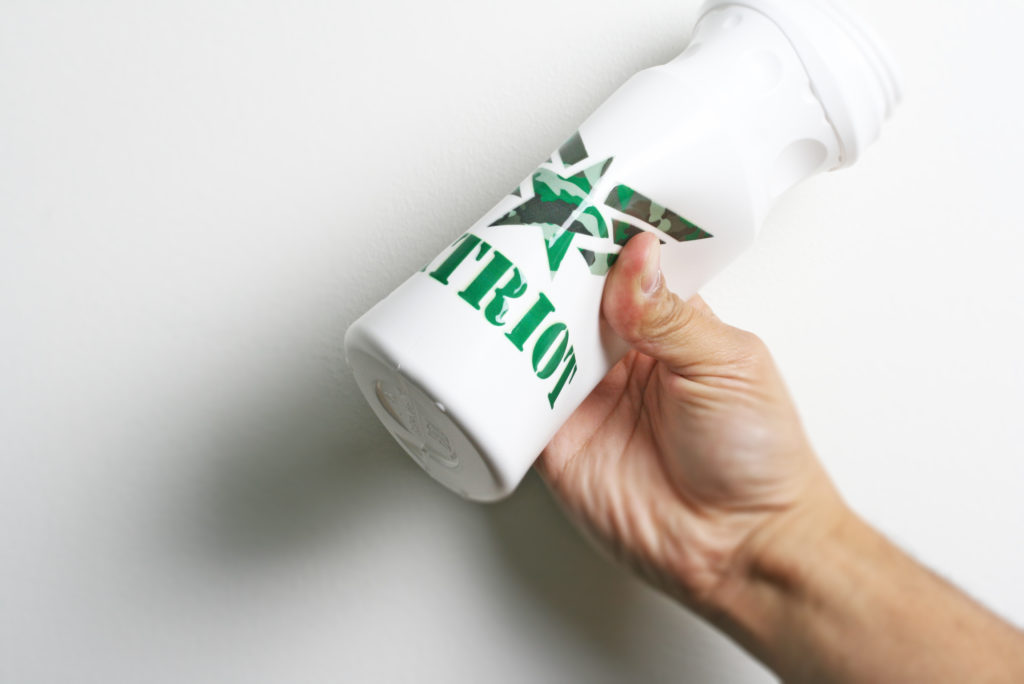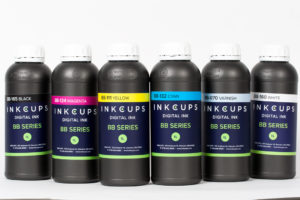- Equipment
- Inks & Supplies
- Services
- Applications
- Tagless
- Resources
- About Us
- Contact Us

As we continue with the Call to Compliance blog series we will explore Migration Testing. Inkcups’ BB Series ink line passes Migration Testing, but what exactly does that mean?
Other blog posts in the series: Call to Compliance: MagiCoat®
Have you ever received a sports bottle as a promotional give-away? Perhaps at an open house by a realtor or from a sports camp or a charity event. Sports bottles remain a popular promotional item as water bottles are used in our everyday life, allowing the brand to easily incorporate into our lives. Sports bottles are flexible by nature and often live a tough life. Imagine rolling around the floor of a minivan or in the dark depths of a football bag. This poses one of the difficulties of printing on a sports bottle. How can this be remedied? Simple, the ink itself needs to be of flexible nature, as well as withstanding contact.
 One of Inkcups’ offerings for digital printers is the BB ultra-flexible ink line. These inks are instantly cured by UV LED light and are known for their bright and vibrant color line. On top of that, the BB inks have excellent adhesion properties as well as high abrasion resistance.
One of Inkcups’ offerings for digital printers is the BB ultra-flexible ink line. These inks are instantly cured by UV LED light and are known for their bright and vibrant color line. On top of that, the BB inks have excellent adhesion properties as well as high abrasion resistance.
The ‘ultra flexible’ portion of the name refers to the ability to print on substrates that flex and the cured ink will bend and fold right along with the substrate without altering, cracking, or distorting the printed image. BB ink is often used on flexible drinkware such as bike or sports bottles.
This ink is available in Cyan, Magenta, Yellow, Black, White and Varnish in 1L bulk containers. Digital printing comes with many benefits, including the ability to create stunning full color graphics.
But one of the most important qualities about BB inks is the fact that it passes migration testing on low dentistry polyethene drinkware. Let’s explore in more depth what that means.
Let’s begin even farther back. What is migration? Ink migration is referred to as the transfer of unwanted substrates from the surface that has been printed on, to the product. There are four different ways in which migration can occur: diffusion, set-off, vapor phase, and condensation extraction. Migration is immensely important for products which temporarily house consumable items.
Migration testing is the process of testing whether the substrate or product has formed a functional barrier between the food and the ink.
When decorating with UV Inks on substrates that either hold food or are used in the food packaging industry, it’s wildly important to consider the potential that the initiators and monomers included in UV inks have the potential to penetrate general food packaging and enter the food inside.
Migration testing ensures that this does not happen. Inks tested that are deemed “low migration” benefit the entire supply chain. Companies can seek out inks like the BB Series and know that printing on low density polyethylene will not result in migration.
As we consume from drinkware, we need to fully trust the entire process. Compliance testing doesn’t need to be viewed as a burden, but rather a challenge to better the entire supply chain. To find all the compliance documents, visit our Resources page. There, you will find safety data sheets, compliance documents and more in English, Spanish, German, Chinese, as well as an increasing amount in French and Dutch.
For any further questions, contact us today.
Back to Blog Home
Add Your Comment